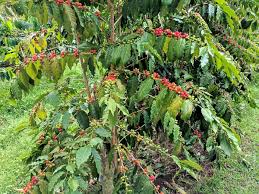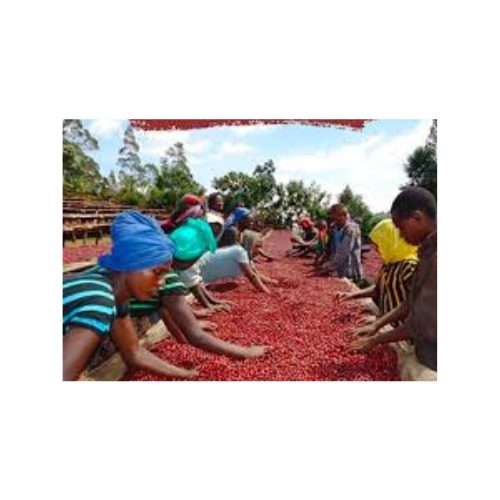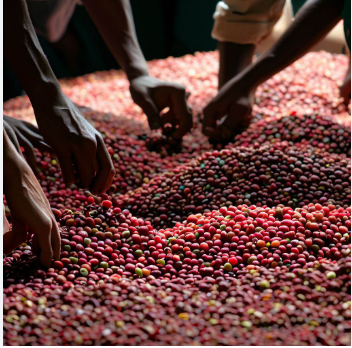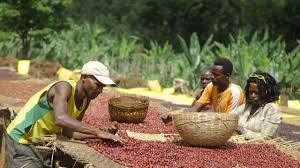Ethiopia
All Categories
- Coffee Farming & Origins
- Processing & Export
-
Coffee Brands & Products
- Local & Global Coffee Brands
- Brand Profiles & Stories
- Abat Coffee
- Chaka Coffee
- Dukamo Coffee
- Etete Coffee
- Feresula Coffee
- Fili Coffee
- Galani Coffee
- Gulifa Coffee
- Hadero Coffee Company
- Haile Permium Coffee
- Illy Café
- Koba Patisserie And Bakery
- Mamokacha Cafe
- Moyee Café
- Robera Coffee
- Shecha Coffee
- Tarara Coffee
- Tomoca Coffee
- Wild Coffee
- Zing Roastery And Coffee Shop
- Yoya Coffee
- Regional Roasters
- International Coffee Companies
- Brand Profiles & Stories
- Roasted Coffee, Single-Origin, Blends
- Specialty & Premium Products
- Local & Global Coffee Brands
- Machinery & Equipment
- Accessories & Supplies
- Events & Competitions
- News & Trends
- E-Commerce Marketplace
Ethiopia
Ethiopia, with 472,000 Tons, holds the top spot as Africa’s leading coffee producer and 7th largest in the world. It has long been considered the birthplace of coffee, although the facts can’t be proven now with some believing that certainly Arabica coffee may have actually come from southern sudan. The country is famous for its unique varieties like Yirgacheffe, Sidamo, and Harrar, each offering distinct flavour profiles ranging from floral and citrusy to rich and wine-like. The rich, diverse coffee from Ethiopia is not replicated anywhere else on Earth and it's difficult to believe how coffee can have such fruity and floral flavours until you sample some from this country.
Ethiopia
Ethiopia, with 472,000 Tons, holds the top spot as Africa’s leading coffee producer and 7th largest in the world. It has long been considered the birthplace of coffee, although the facts can’t be proven now with some believing that certainly Arabica coffee may have actually come from southern sudan. The country is famous for its unique varieties like Yirgacheffe, Sidamo, and Harrar, each offering distinct flavour profiles ranging from floral and citrusy to rich and wine-like. The rich, diverse coffee from Ethiopia is not replicated anywhere else on Earth and it's difficult to believe how coffee can have such fruity and floral flavours until you sample some from this country.
Coffee is deeply embedded in Ethiopian culture, with traditional coffee ceremonies symbolizing hospitality. Ethiopia’s highlands provide the perfect conditions for Arabica beans, and over 15 million people depend on coffee farming for their livelihoods. The country’s coffee heritage, combined with its unmatched quality, cements its global reputation as a coffee powerhouse. (The Afican Exponent).
Coffee was first exported from Ethiopia in the 1600's and since then it has built a reputation for some truly spectacular and high quality coffee. A lot of this might have been because of the overthrow of Emperor Haile Selassie, which resulted in much of the land being nationalised and private land ownership being outlawed. This had the effect of coffee farming going back to its roots of harvesting from the wild and might be why there is now such a diverse range of coffee on offer.
Approximately 50% of production is grown at altitudes above 1,500 metres and Ethiopian coffee is now pretty much at the centre of the speciality coffee scene.
Within Ethiopia there are several coffee growing regions, each with their own distinct climate and therefore flavour.
jimmah, where coffee grows wild and at high elevations.
Harrar is a high grown coffee.
Other coffees originate from yirgacheffe being the sub-region of Sidamo.
Other specific coffee varieties such as limu and babeka the later being a sub- region of kaffa near jimmah..
Sidamo, Harrar and Yirgacheffe were trademarked by the Ethiopian government in order to bring recognition to the distinctive coffee grown in these regions. (Africa Coffee)
0 Products found
You have 4 new notification
Category
- Coffee Farming & Origins
- Processing & Export
-
Coffee Brands & Products
- Local & Global Coffee Brands
- Brand Profiles & Stories
- Abat Coffee
- Chaka Coffee
- Dukamo Coffee
- Etete Coffee
- Feresula Coffee
- Fili Coffee
- Galani Coffee
- Gulifa Coffee
- Hadero Coffee Company
- Haile Permium Coffee
- Illy Café
- Koba Patisserie And Bakery
- Mamokacha Cafe
- Moyee Café
- Robera Coffee
- Shecha Coffee
- Tarara Coffee
- Tomoca Coffee
- Wild Coffee
- Zing Roastery And Coffee Shop
- Yoya Coffee
- Regional Roasters
- International Coffee Companies
- Brand Profiles & Stories
- Roasted Coffee, Single-Origin, Blends
- Specialty & Premium Products
- Local & Global Coffee Brands
- Machinery & Equipment
- Accessories & Supplies
- Events & Competitions
- News & Trends
- E-Commerce Marketplace
Notification









